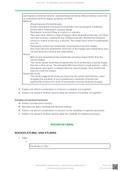Interview
IB Psychology Paper 1 SOCIOCULTURAL Approach
- Course
- Level
- Book
If you want some help on only one of the approaches and not all of them, you can get 1 or 2 of them without having to pay for the whole booklet. This one contains the SOCIOCULTURAL approach.
[Show more]




